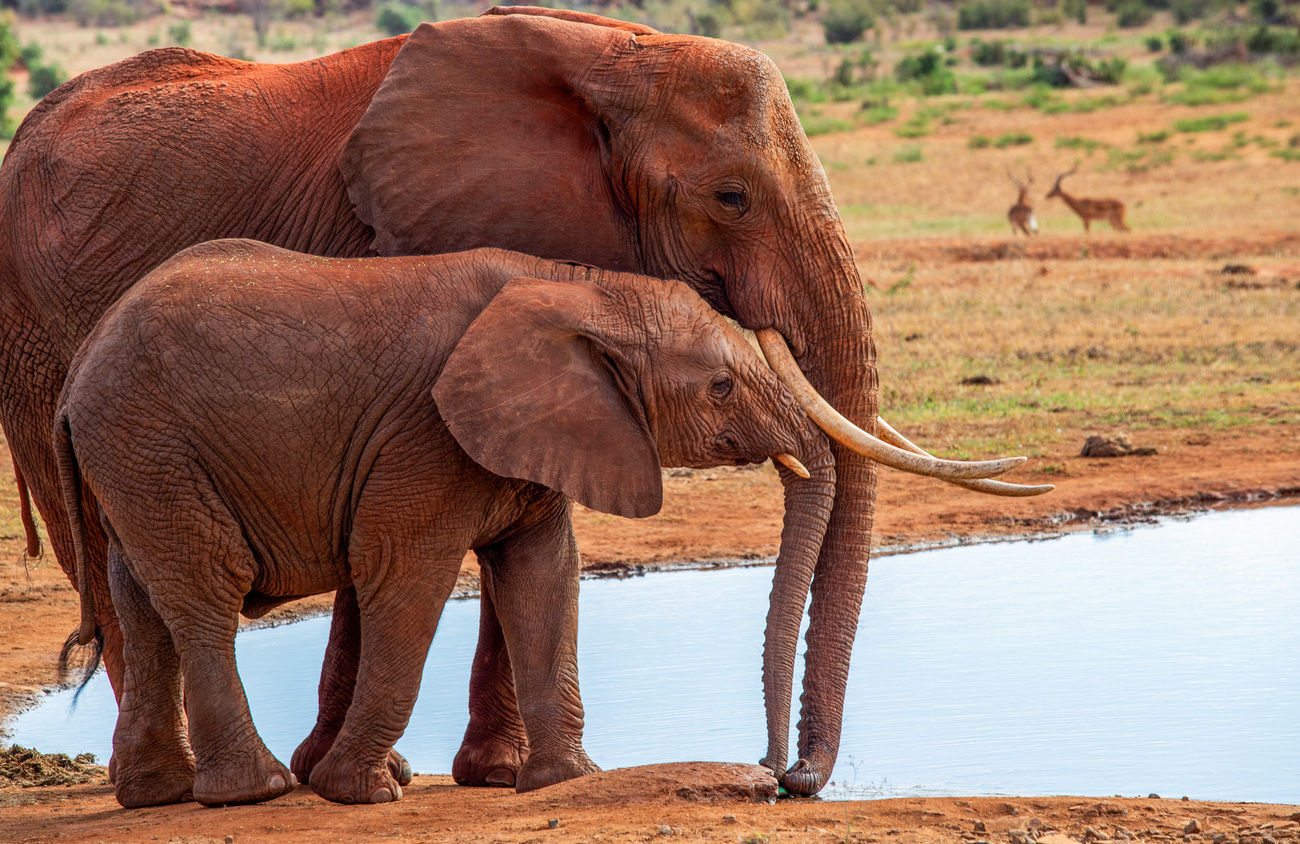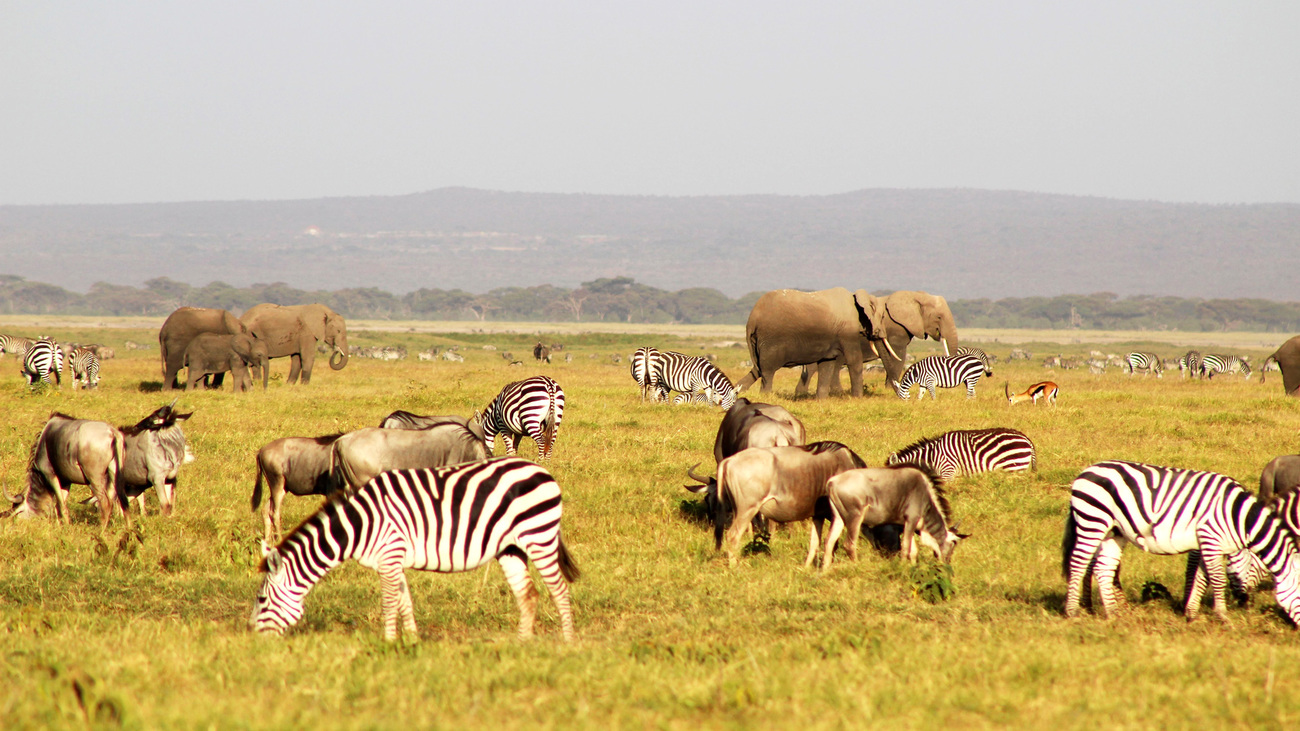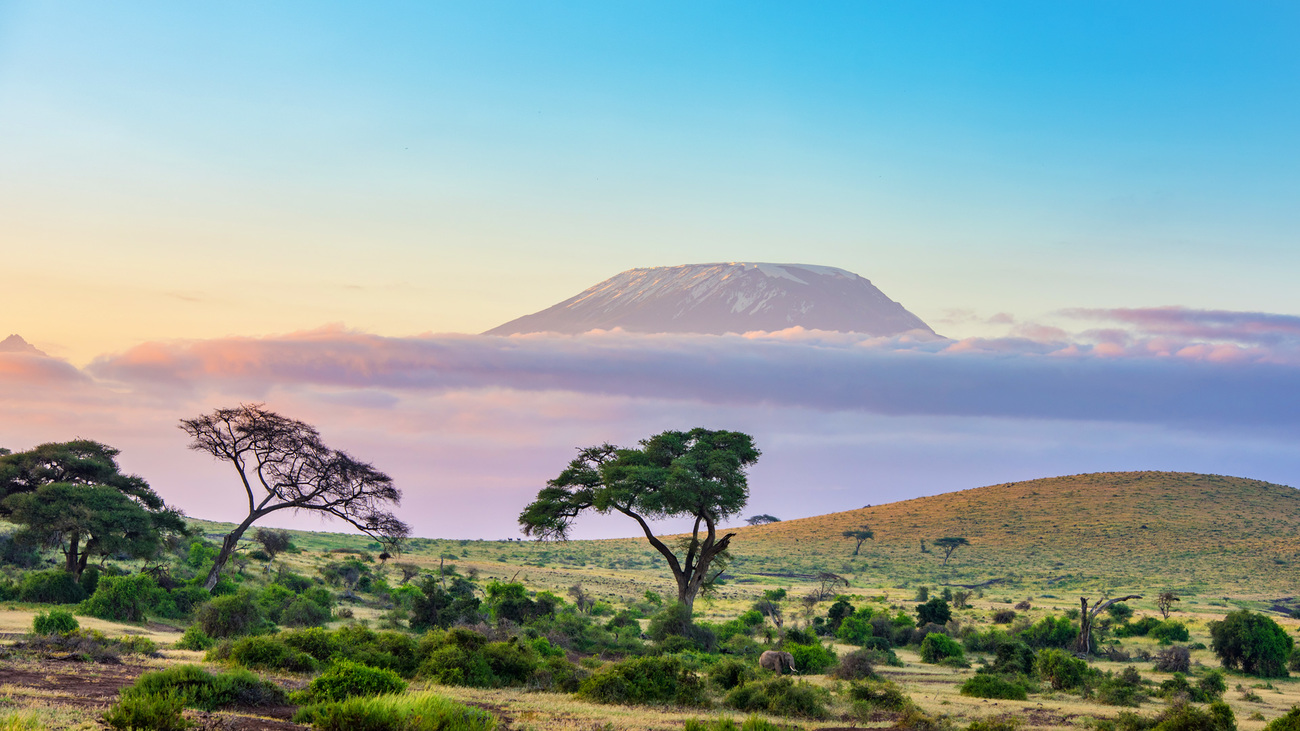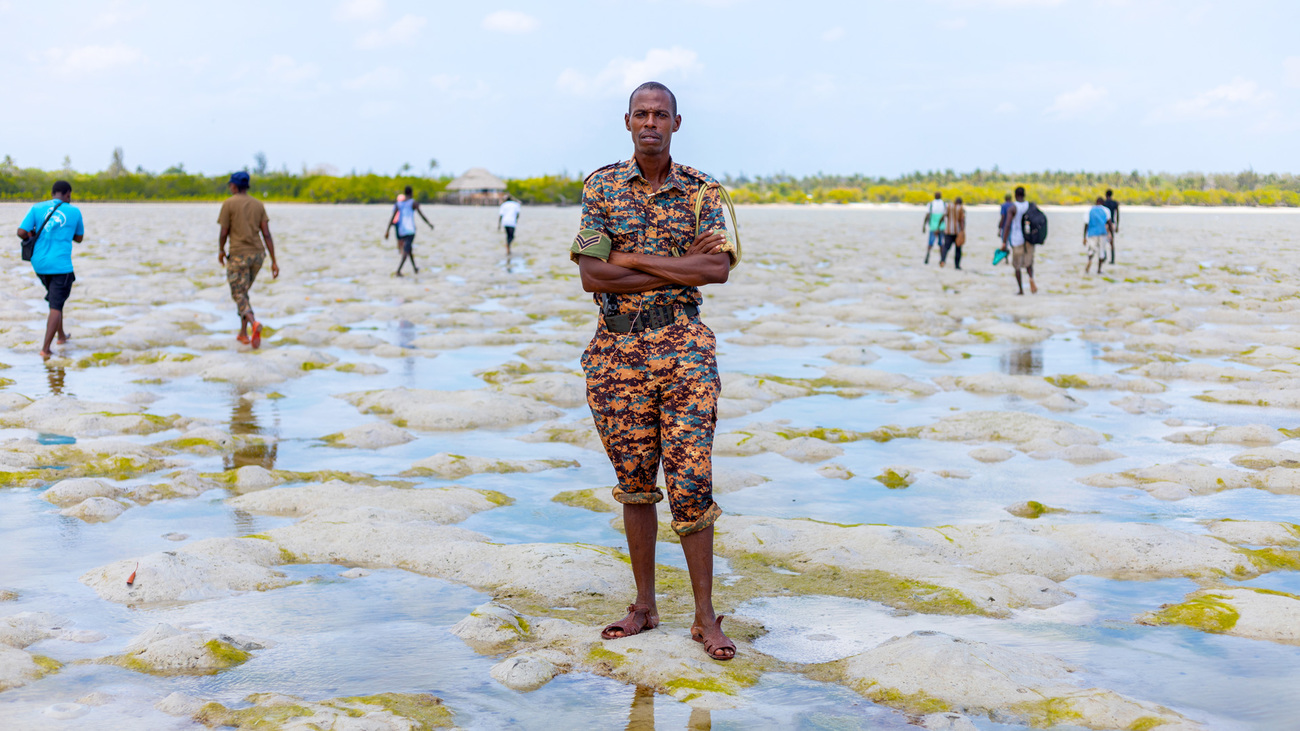Wildlife conservation in Kenya
Wildlife conservation in Kenya
Kenya is one of the most popular safari destinations in the world, with good reason. You can find a vast array of incredible plants and wildlife there, including the famous Big 5—lions, elephants, buffalo, rhinos, and leopards—and the wildebeest migration, known as a wonder of the modern world. Its biodiversity makes Kenya an integral part of global wildlife conservation efforts.

Let’s examine why Kenya has such incredible biodiversity and learn about some of the ways IFAW is working to protect Kenyan landscapes and wildlife.
Kenya’s vibrant wildlife

Kenya is home to an estimated 30,000 different animal and plant species, making it one of the ten most biodiverse countries on the planet. The majority of those species, about 25,000, are invertebrates—animals without a backbone, such as insects and worms—but there are also some familiar faces, including the Big 5 African mammals. Kenya boasts of 1,100 bird species, 315 mammals, 191 reptiles, 180 freshwater fish, 692 saltwater fish, and 88 amphibians. Out of these, some of the most iconic and endangered animal species include black and white rhinos, giraffes, Grevy’s zebras, and African savannah elephants.
In addition to these iconic large mammals, you can find some physically unique animals in Kenya. One example is the dik-dik, a dwarf antelope species which reaches a maximum of 45 centimetres (17.7 inches) tall. You might also find the elephant shrew, a small rodent that hops like a rabbit. Some are endemic, such as the critically endangered Taita apalis, and migratory birds, such as the osprey.
Kenya’s protected landscapes

Kenya lies in East Africa and is almost equally divided into two by the equator. It is approximately 580,000 square kilometres (223,939 square miles), with a lengthy coastline along the Indian Ocean. In addition to the iconic savannahs, the country has mountains, forests, deserts, and even swamps. These varied ecosystems give Kenya varied macro-climates that provide optimal conditions for the survival of different plant and animal communities.
Wildlife conservation is important in Kenya, and about 12% of the total land mass has some form of protection. In total, 8% is defined as either parks or reserves, with 23 national parks and 28 national reserves on land. There are also four marine national parks and six marine national reserves.
Communities derive benefits from these national reserves, such as fish, fuel wood, non-timber forest products, and pasture for livestock during prolonged droughts. The protection status of national parks allows for non-consumptive utilisation only such as tourism, research, and photography. With Kenya’s population expected to reach 57.8 million by 2030, human impact on the environment and natural resources is an issue of major concern.
Animals are protected while they remain within one of these protected areas, but many animals leave national parks and reserves as part of migrations or in search of food and water. This freedom means they can then come into close contact—and sometimes conflict—with humans.
IFAW’s wildlife conservation work in Kenya
Given Kenya’s incredible biodiversity, it’s no surprise that the IFAW has been heavily invested in conservation efforts for 25 years here. Here are some of our key projects and achievements.
Room to Roam

Localised protections have been an important feature of wildlife conservation for decades, but they don’t always meet the needs of larger animals such as elephants. Elephants can travel up to 195 kilometres (121 miles) per day and must migrate across huge distances to find food.
IFAW’s Room to Roam initiative aims to work with these needs rather than against them. We’re building a matrix of connected, protected habitats across southern and East Africa for elephants to safely roam.
Community involvement is key to Room to Roam’s success. IFAW works with the people living closest to the animals and habitats we strive to protect. Our approach is to work with these communities to develop strategies to promote coexistence between people and wildlife—empowering communities from the ground up.
We’re supporting the creation of climate-resilient landscapes by restoring the natural biodiversity of Kenya’s ecosystems. These offer protection from the effects of climate change and vital resources, allowing wild animals and humans to thrive.
Jenga Mama: Empower a woman
IFAW works to empower communities to protect wildlife through the pursuit of wildlife-friendly livelihoods. Jenga Mama—Swahili for ‘Empower a Woman’—is one of these projects.
Women play key roles in providing for their families, and in rural communities, this means utilising natural resources for food and shelter. The struggle to generate enough income can lead to conflict with wildlife or result in an over-exploitation of nature.
Jenga Mama is a trailblazing education project working with a group of 60 women from Kenya’s Maasai community. The women are taught vocational skills, including dressmaking and catering, as well as the entrepreneurial skills they need to set up their own businesses.
With their new businesses, these women can support their families, easing the tensions between their communities and wildlife. They can also become advocates for wildlife within their communities.
Team Lioness
Women are also at the forefront of our wildlife conservation efforts in Team Lioness. Team Lioness is one of the first all-women ranger units in Kenya and consists of 17 young Maasai women who are dedicated to protecting animals in community land surrounding Amboseli National Park.
As the members of Team Lioness come from the same community they patrol, they can utilise their social networks to gather information that aids in carrying out their wildlife security duties. These rangers are the first women in their families to have professional employment, proving to the community that protecting wildlife is beneficial to people and animals.
Team Lioness are on the front line of conservation and combating wildlife crime, as first responders to human-wildlife conflict incidents, protecting elephants, lions, giraffes, cheetahs, and other key species. They’re countering the threat of poaching and working within their local communities to prevent human-wildlife conflict and spread awareness.
Conserving coastal Kenya’s marine life

Kenya might be best known for lions, elephants, and other land animals, but we’re also doing essential work protecting coastal ecosystems and the animals that rely on them. Just like the land, the Kenyan coastline has incredible biodiversity and many endangered species.
Kenya’s five marine turtle species are all classified as endangered or critically endangered. They live alongside whales, dolphins, dugongs, sharks, and rays in these waters. All of these animals are at risk from overfishing, loss of mangrove cover, and climate change.
We’ve been providing training to government workers to share strategies for marine conservation and supporting research to understand how the populations of these animals are changing over time. In March 2024, IFAW facilitated the first marine mammal workshop in Kenya, training fishermen, beach management units, members of dive clubs and community-based organisations, rangers working within Kenya’s marine parks, and officials from the Kenya Marine and Fisheries Research Institute (KMFRI) on the best practices in marine mammal management and conservation.
Together with coastal communities, we are helping diversify livelihoods to reduce overfishing and improve waste management to protect animals from poisoning, harm, and hazardous objects.
Even simple steps can have a large impact, such as increasing awareness among fishermen about the benefits of proper lines and nets rather than re-purposing mosquito nets. This prevents other species from becoming collateral damage through bycatch.
Supporting wildlife rangers

Illegal poaching and other wildlife crimes represent a huge risk to many of Kenya’s endangered animals. We collaborate extensively with communities to combat these various threats.
Within the Amboseli-Tsavo-Kilimanjaro landscape, we support the Olgulului Community Wildlife Rangers. This includes providing them with non-lethal supplies and equipment to protect themselves and animals. In addition, we provide support to ranger welfare and that of their families, including additional housing, supplies, and education. We also support rangers in Loita, Kenya, from the Ilkimpa Community Conservation Association (ICCA).
We’re also working closely with enforcement agencies on the laws around wildlife crime and empowering teams on the ground to enforce those laws. We’re helping with innovative ways to identify illegal activity and take action quickly to avoid further harm to wildlife.
Where criminal acts are identified, we support the judicial system to ensure that wildlife crimes are successfully prosecuted and the perpetrators punished. This directly protects animals from those individuals and discourages others from harming wildlife for profit.
As part of these efforts, we support the counter-poaching efforts of the Kenya Wildlife Service (KWS) air wing.
Supporting alternative livelihoods
We want to offer communities powerful, sustainable alternatives to poaching and other income sources that impact wildlife. We’ve partnered with the private sector to help young people in key villages have a brighter future.
As part of this project, we’ve helped people enter the formal financial system and earn an income from commerce or tourism. We’ve trained others in better agricultural techniques and improved their crop yields.
Education is at the heart of much of our work. We’ve been able to support 66 students through high school and university. These students have studied subjects ranging from business to medicine, but they’re all bringing their knowledge and talents back to support their communities.
Mitigating human-wildlife conflict
Not all threats to wildlife come from poaching. Conflict can sometimes occur as people and animals share scarce resources like water and food, predators threaten livestock, and elephants crop raid agricultural land. We work together with communities and rangers to find helpful solutions for peaceful coexistence with wildlife.
In collaboration with USAID, Big Life Foundation, Amboseli Ecosystem Trust (AET), Taita Taveta Wildlife Conservancies Association (TTWCA), and Tsavo Trust, we’ve created 55 local wildlife conservancies which reduce or eliminate human-wildlife conflict. This incredible project has protected the livelihoods of over 90,000 people—without harming wildlife.
Combating wildlife trafficking
IFAW and our partners, the African Wildlife Foundation and Kenya Wildlife Service, have been working together to fight criminals who are trying to traffic animals across the Kenya-Tanzania border, supported by funding from the US State Department’s Bureau of International Narcotics and Law Enforcement Affairs (INL), and Delegation of the EU to Kenya. We’re improving law enforcement capabilities through the use of DNA evidence and digital technologies.
Ultimately, we want to put an end to wildlife crime. Supporting both law enforcement and local communities offers us the best chance to achieve that goal.
IFAW is making huge strides in wildlife conservation in Kenya, but we can’t do it without your help. Join our effort to protect these incredible animals by donating now or finding out how you can take action for animals.
Related content
Every problem has a solution, every solution needs support.
The problems we face are urgent, complicated, and resistant to change. Real solutions demand creativity, hard work, and involvement from people like you.